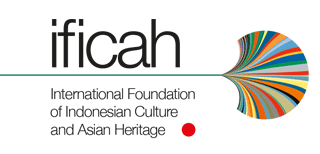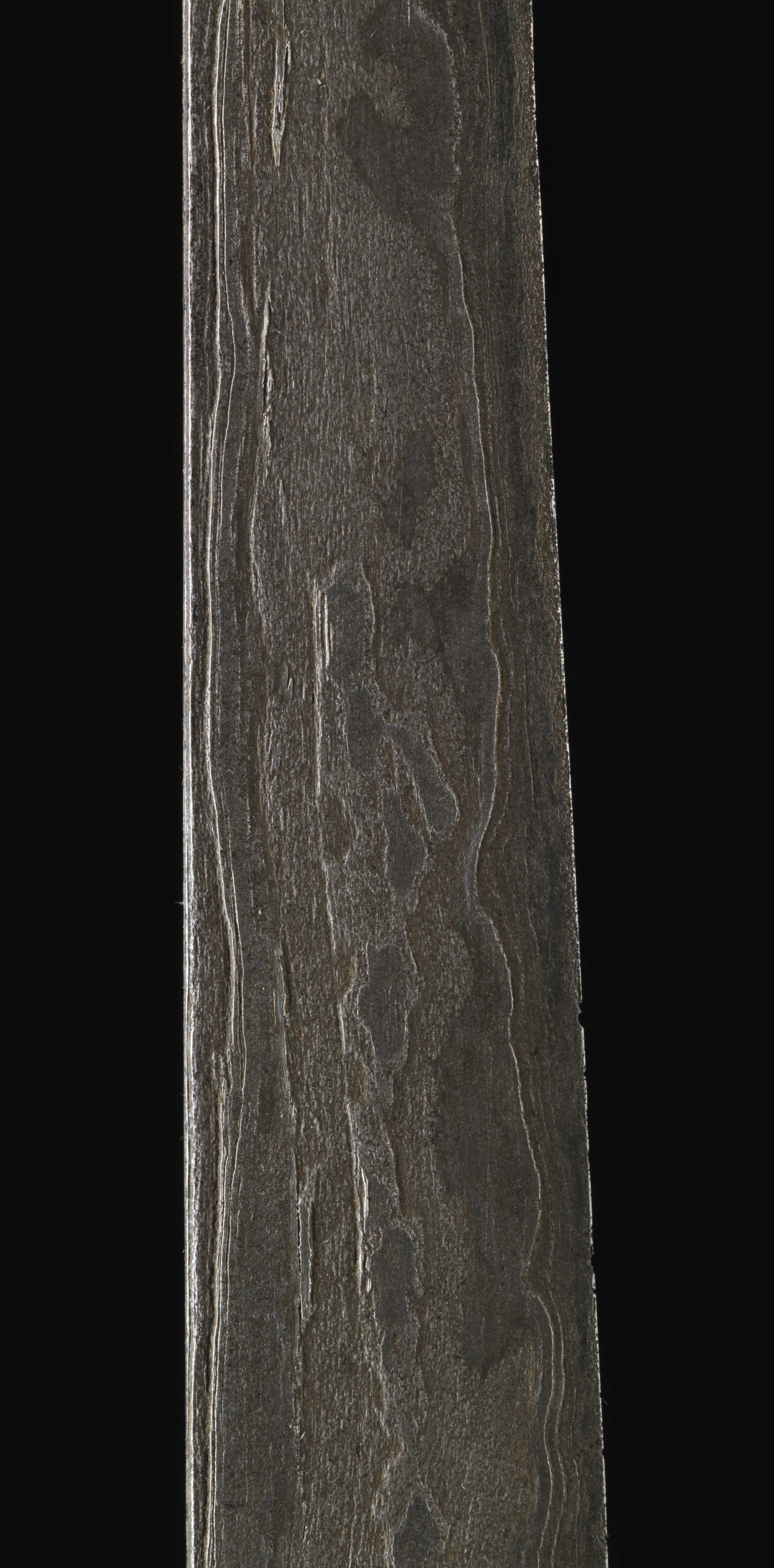Sword „Sumara, penai“
| Object | Sword „Sumara, penai“ |
| Culture | Southeast Sulawesi, Bare’e-Toraja |
| Time | Beginning to the middle of the 19th century |
| Dimensions | Length 73,3 cm |
| Material | Steel, wood, rattan, horn water buffalo (“kerbau”) |
The sword presented here has a straight, single-edged blade with a wedge-shaped cross-section. It widens towards the tip and shows a striking metal structure, which is due to the forging together and multiple folds of different materials. The core of the blade, which emerges at the cutting edge, is formed by a thin layer of hard steel. The handle of water buffalo horn is bent at right angles in the rear part and has geometric carvings in low relief. It is forked at the protruding end and is remotely reminiscent of an open crocodile’s mouth. It is more likely, however, that the hornbill’s head with the high curved balzhorn was originally godfather here. The scabbard made of polished brown cashew wood ends at the foot in a snake or dragon head embedded in tendril ornaments. It is held together by fine woven rattan bands. A carrying cord was passed through a thickened area around the centre of gravity, which is missing today. Fields cut in low relief with floral ornamentation loosen the austere form in several places.
The design of the sheath clearly alludes to traditional cosmology with the world snake Naga Pahóda as the embodiment of the underworld and fertility. The tendrils are probably to be interpreted as a stylised world tree emblem. Serpent and World Tree as well as the hornbill (in the handle) embody the traditional cosmology and division of the cosmos into three levels: upper, middle and underworld. Large horn handles of elaborate manufacture stand for prestige, because buffalos embody wealth and influence. The form of the sword with the protruding, split horn handle, like the piece presented here, is called sumara, form-morphologically a subgroup of the penai, the traditional bare’e swords. The art forms of the Toraja, as well as other characteristics of their material and spiritual culture, still show very clear references to continental Bronze Age cultures (e.g. Dong-S’on).
The place name Tana Toraja for the settlement area of the Toraja comes from the Buginese term to riaja, “people of the mountains”. Today there are about 1.100.000 members of the large ethnogenetic group “To-Raja”, about half of whom live in the regency of Tana Toraja. There are a number of sub-groups, each speaking different languages or dialects. The bare’e-speaking East Toraja to whom our object is assigned are also called Pamona or Pamuna. The Bare’e are based around the Poso Lake, the Gulf of Tomini and Bare’e. Particularly among the Eastern Torahs, who have been considered “blacksmiths” since ancient times, special importance is attached to iron. Annual ceremonies are held to attune favourably the “power of iron” (isi waja) and the “spirits of the blacksmiths”. The reason for this “spiritualisation” of iron is probably its production by melting, which is equivalent to the transformation and rebirth of earthly matter.
Sacred ancient swords are still objects of great importance today. Many legends of Gowa contain famous swords which, according to ancient tradition, were exchanged between the clans at marriages of noble Toraja with the ruling family of Makassar/Bone. At the mabugi and maro festivals, swords are used for exorcist rites in which one even injures oneself in a trance.
Supplementing Literature Back to room view









